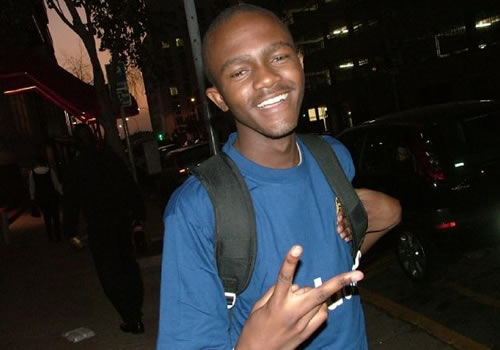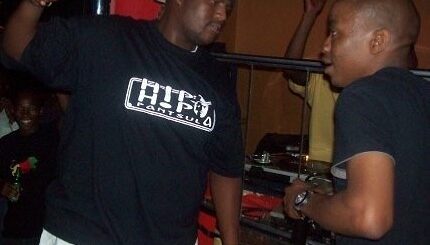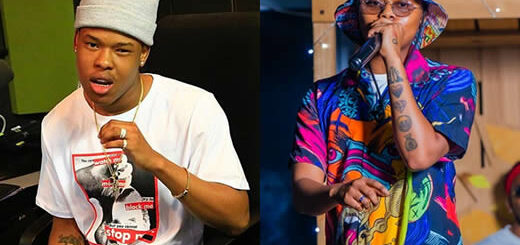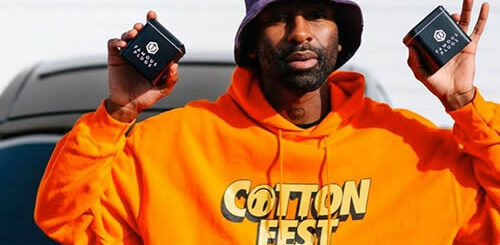The downfall of Kwesta and Rap Lyf

On 12 February 1990, the song “U Can’t Touch This” was released to the world. This song made MC Hammer one of the most popular names and characters spawned in the 1990s, his life would never be the same as he was cast into the spotlight and was an immediate household name.
It is reported that MC Hammer made approximately $30 million directly and indirectly from that song, he was winning awards and was on top of the world. In fact, he is widely regarded as the first rapper to make hip hop mainstream.
Watch the music video for “U Can’t Touch This” by MC Hammer below;
On 1 April 1996, MC Hammer filed for Chapter 11 bankruptcy after the failure of his follow-up albums.
He was $13.7 million in debt with only $9.6 million in assets, he cited the $12 million house he had purchased and staff of over 200 employees who he paid over $6 million yearly, and loans he had taken out, to have contributed to the filing of the bankruptcy.
MC Hammer is a great cautionary tale of how the music industry is a fickle mother that needs you to always make sure your business is in order, or you’ll soon not have one.
Our story starts in Katlehong, Gauteng, east of Johannesburg – which is within the Ekurhuleni Metropolitan Municipality, Senzo Mfundo Vilakazi was born on 11 August 1988 and would later become the rapper Kwesta.

Originally part of the group, “The Juvenylz” in 2003 at the age of fifteen, he would record over one hundred songs at a friend’s studio nicked named “The Crib”.
Kwesta frequently would take part in competitions such as YFM’s Rap Activity Jam – which needs its own article and ETV’s Shiz Niz Freestyle Kings Special.
In 2005, after having recorded boatloads of music, Kwesta decided to take a taxi ride to 75 3rd Avenue, Melville, Johannesburg at an office block where Buttabing Entertainment and Ventilation.co.za shared a space, owned by the South African hip hop legends, Shugasmakx and Slikour respectively.
So this guy made his way to Melville, got to the office block, put his fire music on the table, and got rejected.
Buttabing
After sitting at home having been rejected by Buttabing Entertainment at first, Kwesta was called back after an employee at Ventilation asked Slikour and Shugasmakx to reconsider him. Kwesta would first drop “Stomp!” as the first single, then follow that up with the B side single, “Sharp Fede”.
Watch the music video of “Stomp!” by Kwesta below;
The Kwesta promotion would go on overdrive, from 2006 onwards, Kwesta would tag along and open at Skwatta Kamp shows. During this time, Kwesta would slowly build up his reputation while at the same time moving and shaking the biggest artists in the country.
He released his first mixtape which was hosted by DJ C-Live, and appeared on the Ventilation mixtape. After initially being signed in 2006, Kwesta’s first album, “Special ReKwest” was released in 2010, Slikour was riding high with his single “Umsindo” which was everywhere at the time.
Watch “Umsindo” by Slikour featuring Bleksem below;
Kwesta’s singles weren’t hitting the same spot as Slikour’s, I assume everyone was dropping new music around the same time to take advantage of the World Cup which was in South Africa at the time. After an initial peak in interest, Kwesta’s hype would slowly die down after 2011, this would leave Kwesta frustrated and subsequently call a meeting to leave Buttabing Entertainment, his last single on the label would be “Take That!”.
Nota
Before leaving Buttabing Entertainment, Kwesta would meet three important figures in his career, Leroy Khoza, Yanga Ntshakaza also known as Yanga Chief, and Nhlamulo Baloyi also known as Nota.

After leaving Buttabing, Nota, and Yanga Chief would be the guys to follow Kwesta and make him the project of each other’s success.
After being fired from Buttabing, Nota would make it a mission to take Kwesta to the heights of his predecessors and beyond, he would act as Kwesta’s impromptu manager, booking shows and getting deals for Kwesta.
Having been brought up in a relatively affluent household compared to his peers, Nota was the only one with a business in his name, which his mother would help him start, “Urbantainment”.
The Hangover Tour
One of the most legendary hip hop radio shows of all time in South Africa, “The Full Clip” with Siz n Scoop on YFM, had birthed many artists such as AB Crazy, Kid X, Smashis, Chippa M, and Ginger Trill to name a few, two of which – Smashis and Kid X, would sign to CashTime Life, which was a label spearheaded by legendary group, Teargas members K.O and Ma-E.
Kid X and Smashis would join Kwesta and his new super team on The Hangover tour (THT), they moved from city to city building up their name, Yanga would handle the creative aesthetic, Nota would book shows with promoters and Kwesta was the talent.
After securing a Sony licensing deal, in 2013 Kwesta would subsequently release his second studio album and first under the Urbantainment company, “DaKAR”, an honour to the city in Senegal and a backronym for “Da King of African Rap”.
The album was a departure from the original rap sound of the early noughties, with Kwesta trying to find a more mainstream and radio-friendly sound. The album included features like Crush Crush Burn, Jimmy Nevis, and Soweto Gospel Choir. Leroy Khoza would then be brought in to handle the business end, including setting up an artist agency, “Rainov8”.
DaKAR II
After no real initial change in the conversation around Kwesta, he followed up DaKAR with his third album, DaKAR II. To promote the release of the first album, the song released as the first single was “Nomayini”.
The song itself wasn’t really that big but it was enough to keep Kwesta in the conversation of hip hop with the likes of the newly adored Cassper Nyovest, and the ever-controversial AKA, Kwesta needed something because his star was fading fast.
Watch the music video of “Nomayini” by Kwesta below;
Ngud’
In 2015, a very small trend had been evolving within the townships of Thembisa and the West Rand, which was slowing down a popular House music song, like the American Chopped and screwed sound, this would birth its own mini subgenre.
Immediately when the beat came in, you were taken in by the slowed sample of the original “Camino Del Sol” song by Antena which appeared in the “Soul Candy” album remixed by Joakim, the beat was made by DJ Maphorisa who was on a crazy run at the time producing for Major Lazer and even Drake, making this hit a no brainer.
The real meat of the song was the hook though, Kwesta is known for his deep voice and the song really showcased it, he had found his magnum opus.
Watch the music video of “Ngud’” by Kwesta featuring Cassper Nyovest below;
It seemed as if Kwesta could not lose any more after “Ngud’” was released, his next single was “Day One” with AKA and Tweezy, straight after that, the massive “Mayibabo” which was produced by in-house producer, Makwa, “Ngiyaz’fela Ngawe” with Thabsie would soon follow.
After having burned through all the singles on the album, he still wasn’t done, the follow-up to “Ngud’” being his massive “Spirit” which was a great successor to “Ngud’” and featured American rapper Wale.
Kwesta used the moment of his newfound success to redefine the record label and name it “Rap Lyf”, signing TLT, Kid X, and Thabsie. He went on to win six SAMA awards in one night, “DaKAR II” was certified double platinum, and the single “Ngud’” went diamond.
After a monster four-year run, Kwesta released “Vur Vai”, “Run It Up” featuring Rich Homie Quan, and “I Came, I Saw” featuring Rick Ross as the last songs before the 2020 Covid-19 pandemic hit.
Watch the music video of “Spirit” by Kwesta featuring Wale below;
YouTube Logins
On Friday 16 April 2021, Kwesta released “Fire In The Ghetto”, fans were quick to point out that the video was uploaded on a newly created YouTube channel and not uploaded on the Kwesta artist channel which had over 178,000 subscribers. A fan posted a comment on the discrepancy that read;
@KwestaDaKAR what happened to your old YouTube page with 178k Subscribers? i see you uploaded Fire In The Ghetto on a new page
To which Kwesta responded with;
I’m being kept out of it intentionally. Kodwa sizoncenga ncenga kuze kulunge. Please subscribe.
Immediately, all eyes turned to Nota.
Watch the music video of “Fire In The Ghetto” by Kwesta featuring Troublle below;
Now to understand why public perception turned to Nota immediately, we need to rewind back a little to 2018, Nota was making waves in the industry with his tweets and Instagram posts. The first he would really make headlines was when he responded to Flex Rabanyan about a music video which in his opinion was bad, from then on, Nota would make statements that always challenged the status quo and shied away from being peaceful, eventually arrogantly calling himself The Authority.
He soon received more scrutiny and people would ask more and more who this Nota character is, details would slowly emerge that he was Kwesta’s former manager and at some point had a dispute which caused a split, these were rumours at the time however.
Nota had built up this persona of the Antagony that you loved to hate, people were outside his mentions ready to impel him at the stake, Nota immediately issued a statement saying that Kwesta is ungrateful for the hard work that was put in for him.
Slowly, details would emerge that Rap Lyf did not exist as a legal company, money received from the shows, bookings, gigs, and endorsements would be billed to the agency, “Rainov8” which was owned by Leroy Khoza, then later on by Kwesta.
Money received from the music licensing deal was billed to “Urbantainment”, however, all proceeds as confirmed by Kwesta, were paid by Nota in early 2020 to himself. Anyone who had ever worked with Rap Lyf including Makwa and TLT, started coming out from all corners claiming unpaid fees and royalties.

Kwesta’s interview with the MacG podcast pretty much confirmed his obliviousness to the situation which caused the departure of one of the founders of Rap Lyf, Nota, and subsequently, everyone else thereafter, ending the run of a hard-earned and crazy career.
Epilogue
The tale of the exploited artist is a tale as old as time, however, the truth in this case is that the artist allowed himself to be exploited. It’s a cautionary tale of why it is always important to take care of your business as much as the art.
We have seen right in front of our eyes the tale of a little hero who beat the odds to make it, being reduced to an oblivious and sly man failing to give back and take care of those who put in the work and helped him become the neighborhood hero, which is a shame.
There is no guarantee that Kwesta may have the same success without the original core team that was around him in the beginning, but I’m optimistic that he still has the means and the drive to correct past mistakes and keep the amazing Kwesta dream going.



